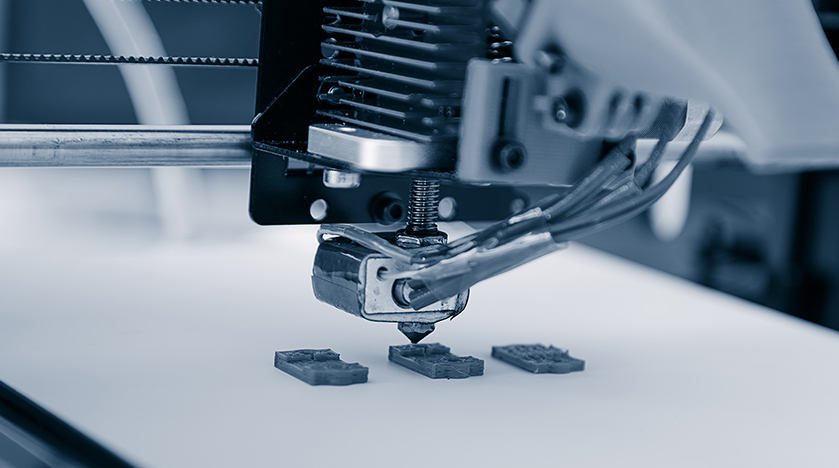An introduction to 4D Printing
4D printing may seem like something way beyond our time, but labs are already working on the futuristic prospects of this impressive feat. It has the ability to transform static, 3D structures into smart objects that can grow, change and move by themselves depending on their surroundings. Something that would never be possible with standard inks and toners.
All from a single printer, this technology can improve water wastage, build homes, support space exploration and help transform the medical industry we know today. Find out what it’s all about in our introduction to 4D printing.

What is 4D printing?
4D printing is essentially the process of giving 3D structures the ability to change
shape or form overtime. During the 4D printing process a 3D structure will transform by themselves using heat, water, sound or vibration as its energy source. The name diverts from the 3D structured state, added to ‘time’, equals this new 4th dimension. 4D printing is what happens after the printing is processed.
How does 4D printing work?
During the 3D printing process, where a machine is programed to construct a structure layer by layer, a precise geometric code is added to create 4D printing. This coding is based on the shape’s exact angles and dimensions. It gives the shape a ‘memory’ by giving directions to its components on which way to move or how to change once confronted with certain environmental influences. It will predict how the shape will adapt when faced with an energy source such as, water, heat and sound. This process changes a standard static 3D shape into a responsive object, or ‘smart object’, which ultimately means they can self-assemble, move and adapt to a change in the environment.
3D printers vs 4D printers
3D printers use modern technology to build a tangible structure layer by layer and 3D technology has progressed dramatically. 3D printing is now being used to build houses and in the medical industry, they are using the technology to rebuild prosthetic limbs and organs.
4D printers don't actually exist as a functioning machine. Instead, you’ll need to use a 3D printer to create the static object and to add all the 4D coding before subjecting the object to the elements that encourage the shape to alter. This means that at this point in time, 4D printing cannot exist without a 3D printer, so, there’s still room in the future for both types of technology.
Advantages of 4D printing
One of the main advantages is you can create large 3D objects that would normally be too
big to fit into a regular 3D printer. By using the 4D printing technique you can create a smaller object in its first form, which can then spring or fold out into a larger object in its secondary form. 4D printing can be used on lots of different types of materials than originally through. Everything from jelly to wood can be processed, so you can clearly foresee the great potential in 4D printing.

The Future of 4D printing
The concept of 4D printing sounds like something out of a science fiction film, but smart
objects can have a purpose in modern society. Smart objects can expand, bend, shrivel, fold-out and change form; the possibilities are endless - objects could even disappear! 4D printing has the power to turn a 2D surface into a 3D structure. This means there could be potential to build infrastructure. This could be beneficial in disaster areas or war zones where traditional building is too expensive and time consuming.
As well as being used for grand schemes, such as rebuilding homes, or extending an escape ladder five times its normal size in a fire emergency. 4D technology can be applied to home appliances to improve functionality. Taps could turn off by themselves and water pipes could expand or shrink depending on water pressure, which could improve water waste.
Pipes could even heal themselves if freezing conditions causes the material to crack. Imagine clothing that can produce extra layers, or t-shirts that can grow sleeves in cold temperatures. It could mean that self-assembling flat pack furniture isn’t too far away either. You can also only imagine the endless medical opportunities.
From sportswear adapting depending on how it’s being used, to operating 4D technology in space to build intergalactic cities, to build cities in space, both are impressive. It just goes to show that elements of science fiction aren’t too far away.
